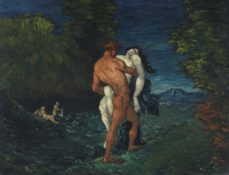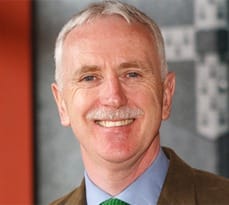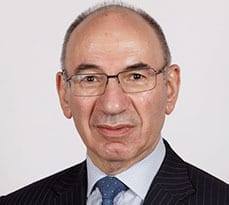Study based at Cambridge Judge Business School shows John Maynard Keynes made ‘extraordinary’ returns as a collector of Picasso, Matisse and other modern masters, while highlighting the limitations of art price indexes.

The Cezanne, Renoir and Picasso-filled art collection of economist John Maynard Keynes has generated “extraordinary” long-term returns above government bonds and nearly equal to equities, says a just-published study based at Cambridge Judge Business School that highlights the limitations of art market indexes.
Keynes invested less than £13,000 between 1917 and 1945 on his extensive art portfolio, which by the beginning of 2019 had an estimated open market value of more than £76 million – an internal rate of return of 6.1 per cent in real terms (10.4 per cent in nominal terms). If the value of Keynes’s collection had merely kept pace with inflation, it would have been worth less than £500,000 at the beginning of 2019.
Unlike previous studies of art as an investment, which looked at art market aggregate indexes, the study by academics at Cambridge Judge Business School and HEC Paris looks at Keynes’s actual long-term art portfolio – which also includes paintings and drawings by Matisse, Seurat, Degas, Modigliani, and “Bloomsbury Group” artists Vanessa Bell and Duncan Grant who were part of Keynes’s bohemian social set.
“Indexes surely increase our understanding of historical price movements and cycles in the art market,” says the study published this week in the Review of Asset Pricing Studies. “However, they … should be employed with care in asset allocation studies and performance measurement.”
The study cites among other factors the lack of investability of art indexes, and it identifies several attributes of art collections including transaction-specific risk and portfolio concentration that are “crucial in explaining why individual investors’ returns can diverge substantially from market returns.”

Underlining such concentration: of the more than 100 pieces of art purchased by Keynes, his 10 most expensive purchases represent 80 per cent of his total art expenditure. The most expensive painting, an 1867 Cezanne work called L’Enlèvement (The Abduction), was purchased in 1935 for £3,500 – more than 25 per cent of Keynes’s total lifetime art expenditure. L’Enlèvement, which first belonged to French writer Émile Zola, is believed to depict the abduction of Proserpine by Pluto as told in “Metamorphoses” by Roman poet Ovid.
Keynes bequeathed his entire art collection to King’s College, Cambridge, upon his death in 1946, and the most important pictures are hung at the Fitzwilliam Museum in Cambridge. The study was made possible by Keynes’s careful documentation of his art transactions, records which are housed in the King’s College archives.

The study – entitled “Art as an Asset: Evidence from Keynes the Collector” – is co-authored by Dr David Chambers, Reader in Finance and Academic Director of the Centre for Endowment Asset Management (CEAM) at Cambridge Judge Business School; Professor Elroy Dimson, Research Director (Finance & Accounting) at Cambridge Judge and Chairman of CEAM; and Dr Christophe Spaenjers, Associate Professor of Finance at HEC Paris.
The study notes that art price indexes featured in previous studies showed significant long-term underperformance compared to equity markets, whereas the Keynes art collection has outperformed bonds and was surpassed by equities only in the past 20 years. (The annualised underperformance of his art collection compared to investing in UK equities and reinvesting dividends on a cost-free basis over the past seven decades is just 0.2 per cent.)
“For the art collection to have performed far better over the period than government bonds, and to have nearly matched the total return on equities, is an extraordinary outcome,” the study says. “The collection performed especially well shortly after purchase, suggesting that Keynes was able to buy art at attractive prices.”
Keynes also enjoyed good fortune playing the stock market, according to an earlier study by Dr David Chambers and Professor Elroy Dimson.

The new study’s findings on the limitations of art price indexes and substantial divergence of individual art investor returns is not merely of academic interest, as many of the world’s ultra-high-net-worth individuals are heavily invested in art. The 200,000 individuals with a net worth exceeding $30 million on average allocate about four per cent of their portfolio to art and other luxury collectibles.
“As with many other buyers, a mixture of motives for acquiring art seems to have been at play” for Keynes, the study says. “Keynes had an innate love of the arts, enjoyed the company of artists, and was greatly influenced as to his tastes by other members of the Bloomsbury Group, a collective of British intellectuals and artists. “In addition, he was interested in art as an investment.”

